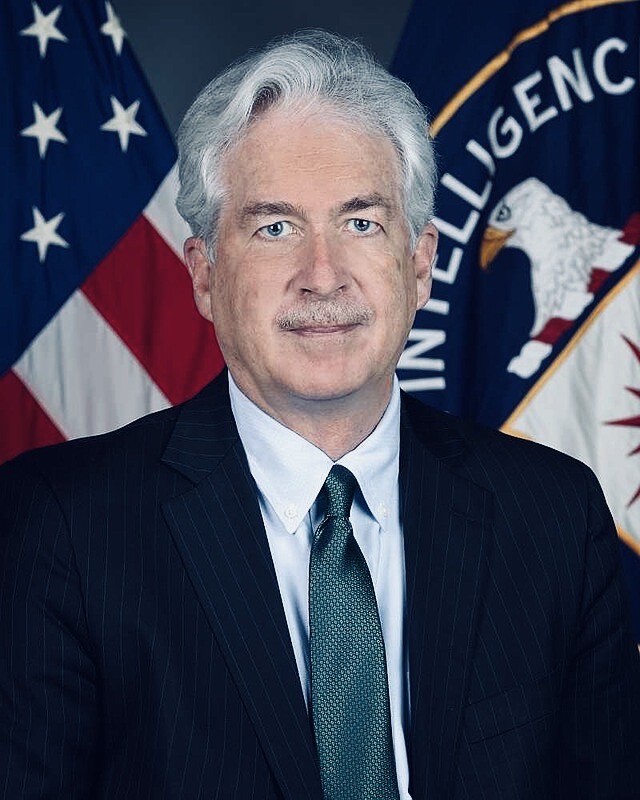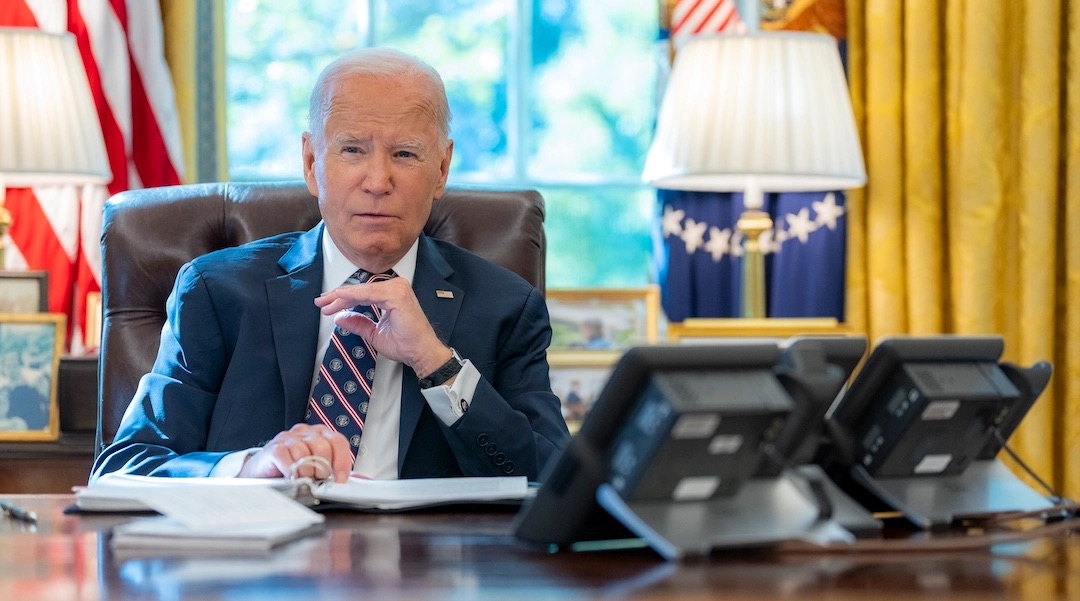By insisting that the year-long Israel-Hamas war in the Gaza Strip has run its course and should be wound down, the United States is jumping the gun.
Of late, U.S. President Joe Biden has repeatedly called for a ceasefire that, he hopes, would lead to several desirable outcomes: the end of the war, the release of Israeli hostages, the reconstruction of Gaza, and a historic Israel-Saudi Arabian rapprochement that would alter the political landscape of the Middle East.
Biden’s promotion of a truce stands in sharp relief to the pessimism expressed by U.S. officials last month. According to The Wall Street Journal, they acknowledged that a ceasefire/hostage deal between Israel and Hamas was unlikely during Biden’s term in office, which ends next January.
But since the death of Yahya Sinwar, Hamas’ supreme leader, the United States has reverted to its previous position that the climate is right for a ceasefire.
Realistically, Biden’s call for diplomacy is premature because neither Israel nor Hamas are ready to moderate their respective policies.
The Biden administration is acutely aware of this problem, yet believes that a breakthrough may be possible now that Sinwar is out of the picture.
Shortly after Israeli forces killed Sinwar in Rafah on October 16, Biden said, “It is time for this war to end.” Biden disclosed he had urged Israeli Prime Minister Benjamin Netanyahu to “move on” and focus on creating what could be a new political order in the region.
Echoing his sentiments, Vice President Kamala Harris, the Democratic Party’s candidate in the forthcoming presidential election, said the time had come for “the day after to begin.” This was an implicit reference to ending the war, rebuilding Gaza and installing a new Palestinian government there under the leadership of the Palestinian Authority.
U.S. Secretary of State Antony Blinken, who arrived in Israel today on his eleventh visit since last October, said a few days ago that Sinwar’s death “can create a momentum to end the conflict.”
Biden’s spokesman, John Kirby, blamed Sinwar for blocking a truce, saying his death provides “a unique opportunity” to clinch a deal.
It will be recalled that Biden made the same argument after Israel’s assassination of Sinwar’s colleague, Ismail Haniyeh, in late July.
Speaking to Netanyahu after Haniyeh’s demise, Biden said, “I had a very direct meeting with the prime minister — very direct. We have the basis for a ceasefire. He should move on it … now.”

The director of the U.S. Central Intelligence Agency, Bill Burns, claimed that 90 percent of the details of a ceasefire agreement had been nailed down, while Blinken said it was incumbent on Israel and Hamas “to get to yes” on the remaining unresolved issues.
Netanyahu begged to differ. “There is not a deal in the making,” he said. “Unfortunately, it’s not close.”
After Sinwar’s death, Netanyahu poured cold water on the possibility of a ceasefire. “This war is not over,” he declared bluntly, shortly after the Israeli army launched yet another clearing operation in northern Gaza to block an attempt by Hamas to regroup.

The minister for national security, Itamar Ben-Gvir, hewed to the same talking point. “We must continue with all our strength until total victory,” he said, summing up Israel’s overarching objective.
Sinwar’s deputy and possible successor, Khalil al-Hayya, was just as blunt. On October 18, he said that a ceasefire would only be attainable following a complete Israeli withdrawal from Gaza and the release of Palestinian prisoners from Israeli prisons.
Hayya’s maximalist demands are incompatible with Israel’s unwavering terms for calling a halt to the war.
The consensus in the Israeli government appears to be that a pullout from Gaza at this juncture would be a mistake and would have grave implications for Israel’s security on two counts.
Although militarily degraded, Hamas might well be able to reconstitute itself and eventually plan another attack against Israel on the scale of October 7.
Hamas, too, would continue to govern Gaza.
If these scenarios unfold, Israel’s ground offensive in Gaza, which already has claimed the lives of 354 soldiers, would be perceived to have been a futile and wasted effort.
Dedicated to smashing Hamas once and for all, and thinking that Israel has been presented with a golden opportunity to do so, Netanyahu is staunchly opposed to a withdrawal from Gaza now and in the foreseeable future. Netanyahu is intent on destroying Hamas’ military and governing capabilities, maintaining an Israeli presence in the Netzarim Corridor in central Gaza, and retaining control of the Philadelphi corridor along the Gaza-Egypt border.

Apart from these factors, Netanyahu is averse to a ceasefire for purely personal reasons. It could lead to a domino effect resulting in the breakup of his far right-wing coalition government, the onset of fresh elections, his ouster from power, the end of his premiership, and his conviction in a courtroom of bribery, fraud and breach of trust.
These perils notwithstanding, Netanyahu is under tremendous pressure to reach a deal. It is coming from various sources: the Mossad and the Shin Bet, Israel’s main intelligence agencies, the Ministry of Defence, and the families of the 101 hostages and their friends and sympathizers.
Despite the strain of the Gaza war, the families of the hostages have mounted massive protests in cities and towns across Israel. Some demonstrators have accused Netanyahu of undermining the hostage negotiations to suit his own purposes.
Ronen Bar, the director of the Shin Bet, Israel’s internal intelligence agency, flew to Cairo on October 20 to meet his newly appointed Egyptian counterpart, Hassan Rashad, to discuss the prospect of reviving hostage negotiations. Bar reportedly offered Hamas a two-week ceasefire in exchange for the release of five hostages.
In the meantime, the director of the Mossad, David Barnea, has been pushing for a much broader agreement that would bring the wars in Gaza and Lebanon to an end and the release of all the hostages.
As these developments unfold, U.S. envoy Amos Hochstein has flown to the region to engage Lebanese officials in talks for a potential ceasefire in Lebanon.
Two years ago, Hochstein was instrumental in convincing Israel and Lebanon to sign an agreement that defined their maritime border. But his most recent efforts to defuse the armed confrontation between Israel and Hezbollah failed.

On October 21, Hochstein said that only the implementation of United Nations Security Council Resolution 1701, passed in 2006 after the Israel-Hezbollah war, can save Lebanon from further bloodshed. It should be implemented “fairly, accurately and transparently,” he told the press.
The resolution requires southern Lebanon to be demilitarized and patrolled solely by the Lebanese army and the 10,000-strong United Nations Interim Force in Lebanon. All other armed groups, including Hezbollah, would be required to withdraw to a line north of the Litani River, which is 30 kilometers from the Israeli border. Until now, Hezbollah has flagrantly violated this resolution in the face of the Lebanese government’s passivity.
Prior to Hochstein’s arrival in Beirut, Israel handed the United States a document outlining its demands for ending the war in Lebanon by diplomatic means.
According to reports, Israel has demanded the right to enforce any understanding that forbids Hezbollah to rearm and rebuild its military infrastructure close to the Israeli border. Israel has also demanded that its air force should be free to conduct operations in Lebanese airspace if the need arises.
It would be truly surprising if the weak and ineffectual Lebanese government, which pays great deference to Hezbollah, accepts Israel’s conditions. But as far as Israel is concerned, these conditions are integral to fostering peace and security along its northern border.
